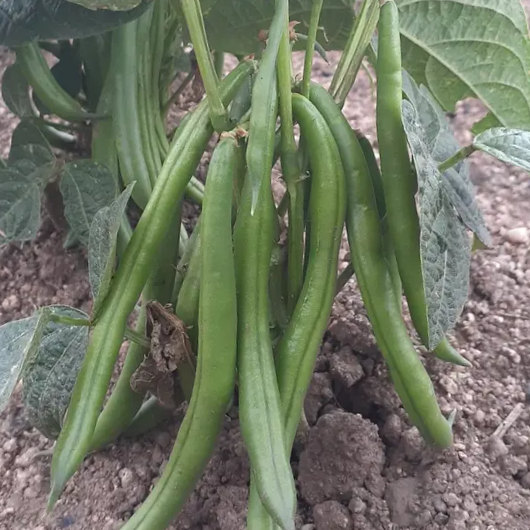A meeting of the Araluen branch of the Agricultural Bureau was held on 19 November 1926 to hear a lecture on ‘Vegetable Culture’ by Mr. A.J. Pinn, a special agricultural instructor. Mr. Pinn thought that the valley would be suited to raising early crops of vegetables such as asparagus, potatoes, peas, beans and potatoes. Early crops would mean growers receiving better returns for their work.
The Araluen branch of the Bureau at this time had 36 members and also included several officers of the Agricultural Department.1Braidwood Review and District Advocate (NSW: 1915-1954), Tuesday 7 December 1926.
On Friday 5 May 1944, the Braidwood Dispatch and Mining Journal2Braidwood Dispatch and Mining Journal (NSW: 1888-1954), 5 May 1944. reported on a meeting convened by Miss Mollie Collins to discuss the possibilities of the valley as a fruit and vegetable and seed-producing centre’. There were 40 to 50 people present. Mr. H. Major, Commonwealth Inspector of Vegetable Production spoke on growing vegetables on a large scale at different centres and explained that he thought that Araluen could play an important role in the growing of beans for seed, especially as the district was a disease free area. He advocated for the use of modern American machinery and methods which could support extensive acreages.
Mr. Major said that ‘if he could get a guarantee that 100 acres of beans were planted this year then he would arrange for a machine to be brought up from Moruya to do the harvesting’. Following a discussion, a number of growers agreed to plant 121 acres of beans for seed this season at a guaranteed price of £3 per bushel, with a possibility of extending that acreage. A committee was then elected with the following members: Messrs. L.C. Blundell, J. Naughton’s, C. Booth,
C. Dunshea, T. Collins, P. Alder, R. Goward, E. Keys and Roy Keating.
Mr. Major suggested growing the following varieties: Brown Beauty, Tweed Wonder, Hawkesbury Wonder and Wellington Wonder, all of which were practically disease resistant. He added that at least 30 bushels an acre should be harvested given a normal season.
It was reported on Tuesday 16 May 1944 in the Braidwood Review and District Advocate3Braidwood Review and District Advocate, 16 May 1944. that ‘Mr. Major was back in Araluen on Friday and over the weekend to address a public meeting to allay the fears of some of the prospective growers regarding planting and harvesting costs. He left on Monday with contracts for over 100 acres signed up with the prospect of 30 acres more.’
On 10 May 1945 the first consignment of bean seed was sent from Araluen to the Seeds Production Committee—78 bags of Brown Beauty and 59 bags of Hawkesbury Wonder. The Brown Beauty were grown by Mr Gordon Alley at Bettowynd and the Hawkesbury Wonder by Mr Murray Hyland of ‘Condry’.
At Merricumbene, Mrs Bowler and Miss Maud Mallon both had good returns from their harvest. Mrs Bowler harvested approximately 300 bushels of Hawkesbury Wonder seed from around 8 acres.
In a letter to the Araluen Co-operative Society, Dr McMillan from the Seeds Production Committee praised the standard of the seed received and expressed his confidence in the future of the industry in the Araluen Valley.

Sue Ahearn (pers. comm.) relates an incident that occurred in 1945. Her father recalled that his step father, Sil Byrne and Les Blundell planted beans in a paddock north of Del Ponte Lane and across to the corner of Byrnes Lane and Quong Tart Close. They had a contract to grow beans for Edgells. When the beans were ready to be harvested, the tractor was used to pull all the rows into one. Unfortunately, heavy rain started to fall with subsequent flooding in the valley. All of the vines with beans still attached, floated away and ended up in the dams below, in Byrne’s paddocks (now McDougall’s) and into the lagoon. He said that they were eating beans for weeks after.
On Tuesday 17 April 1945, the Braidwood Review and District Advocate4Braidwood Review and District Advocate (NSW: 1915-1954) Tuesday 17 April 1945. adds to Syl. Byrne and Les Blundell’s experiences, reporting that ‘a number of growers had their bean crops washed away after they had been cut and were ready for thrashing. It is expected that the water-soaked crops will be able to be dried and thrashed and that the seed will be fine. One grower who lost much of his crop reported that a gully 6 feet deep had been cut through his land by the water.’
The Braidwood Dispatch and Mining Journal5Braidwood Dispatch and Mining Journal (1888-1954) of Friday 30 January 1948. on Friday 30 January 1948 reported that ‘Mr Syl. Byrne of North Araluen picked over 200 bushels of Hawkesbury Wonder beans from 1 acre of land. Mr. Peter Harrison bought 200 bushells and some were distributed to local people. Mr. Byrne expected to get a good many bushells of seed beans from the remaining crops.’
Bean growing has been an important agricultural activity in the Araluen Valley for a long period of time and although it is no longer a major crop, beans are still grown on a smaller scale in the valley and continue to be sold in the local markets.